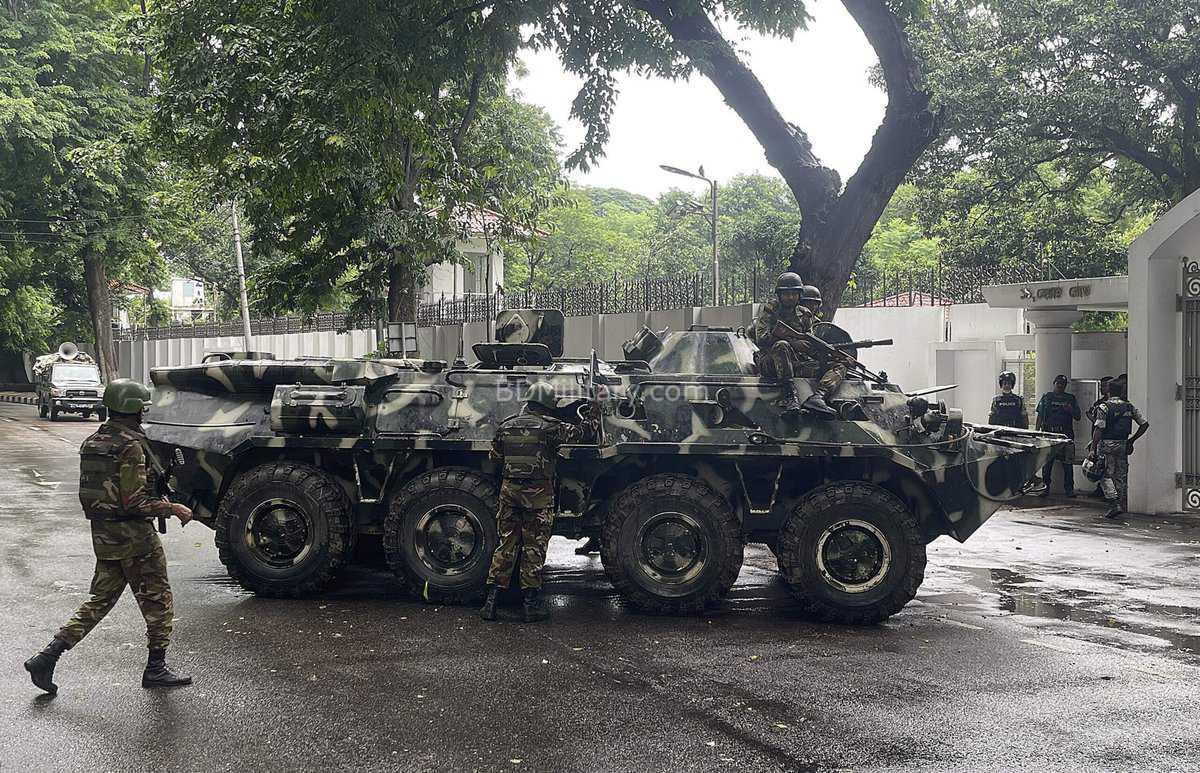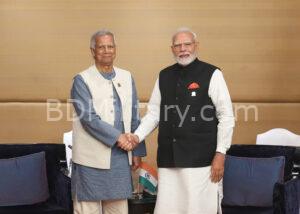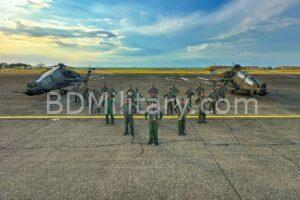Bangladesh’s Election Commission (EC) is preparing for a nationwide security mobilisation unprecedented in scale since the 2018 general election. Around 800,000 law enforcement and auxiliary personnel are proposed to be deployed for an eight-day security operation surrounding the forthcoming 13th National Election, expected in early February 2026.
At a high-level law and order coordination meeting held at the EC Secretariat, Election Commission Secretary Akhtar Ahmed confirmed that the deployment period had been proposed for extension from the previously planned five days. The decision, he said, reflects “a proactive and precautionary approach to ensure a peaceful, credible election environment.”
Comprehensive Security Architecture
According to EC projections, the deployment will include:
- 90,000–100,000 Bangladesh Army troops
- 150,000 police officers
- 550,000 Ansar and Village Defence Party (VDP) personnel
These will operate alongside specialist elements from the Rapid Action Battalion (RAB), Border Guard Bangladesh (BGB), Armed Police Battalion (APBn), and the Bangladesh Coast Guard.
This integrated security effort is designed to secure polling stations, escort election materials, deter unrest, and ensure the safety of voters and officials. The overall command structure will follow a joint coordination framework under the Election Commission, operating in concert with the Ministry of Home Affairs (MoHA) and respective force headquarters.
The meeting—chaired by Chief Election Commissioner (CEC) AMM Nasir Uddin and attended by four commissioners, the Home Secretary, and top law enforcement representatives—reviewed an operational plan built around three distinct phases.
Three-Phase Operational Framework
Phase I: Pre-Election Stability Operations
Before the official election schedule announcement, the Home Ministry will direct intelligence-led operations to neutralise potential threats.
Objectives include:
- Recovery of illegal weapons and suppression of arms trafficking
- Targeted operations against known agitators, terrorists, and organised criminal networks
- Reinforcement of communal harmony and prevention of politically motivated violence
These actions are intended to shape a stable security environment prior to campaigning, with BGB and police leading ground operations, supported by Army intelligence and RAB tactical teams.
Phase II: Campaign and Polling Security
From schedule announcement to polling day, the focus shifts to protection of political activities, campaign movements, and polling infrastructure.
- Static detachments of police and Ansar personnel will guard polling centres.
- Mobile patrols by RAB, BGB, and APBn will serve as striking forces, providing layered response capability.
- Judicial and executive magistrates will accompany mobile teams to ensure immediate legal oversight and accountability.
- Special attention will be paid to preventing infiltration by “outsiders” into volatile constituencies.
Phase III: Post-Poll Stability and Withdrawal
After voting concludes, forces will maintain area dominance during counting and results declaration.
Post-poll security will prioritise:
- Rapid response to unrest or reprisals
- Protection of election materials and officials
- Gradual de-escalation and phased withdrawal under EC-MoHA supervision
C2 and Communications Structure
Operational command will follow a dual-chain coordination system:
- Strategic control: Election Commission through a national coordination cell with MoHA and Armed Forces Division (AFD)
- Tactical control: Local Returning Officers acting through District and Upazila Election Security Committees
Each level will have designated communications liaisons ensuring interoperability between military and civilian command posts. The Army is expected to provide logistics, communications relay, and mobility support to remote regions, particularly in Chattogram Hill Tracts and riverine districts.
Technology and Intelligence Integration
In a notable evolution from previous elections, the EC has authorised the use of AI-assisted analytics for social media monitoring to detect and counter misinformation campaigns, coordinated online agitation, and incitement.
Only authorised law enforcement units will operate unarmed drones for surveillance and area mapping; the use of drones by political parties or private actors will remain strictly prohibited.
Election logistics in remote or inaccessible areas will be supported by rotary-wing assets, with the Air Force and Army Aviation providing limited helicopter lift capability for ballot and personnel transport.
Additionally the Bangladesh Police will be equipped with over 40,000 new bodycams.
Operational Readiness and Risk Outlook
According to EC Secretary Ahmed, there are “no major concerns” regarding the prevailing law and order situation. Intelligence agencies have not identified any imminent threats that could impede polling.
Approximately 85% of stolen or missing arms have been recovered, with follow-up operations under way.
The EC expressed confidence that the security environment is “conducive to free and fair voting,” noting that all agencies demonstrated strong institutional readiness and inter-service cooperation during tabletop exercises.
Budgetary allocations will determine the final deployment period and logistical scale, but early coordination between civilian and military authorities indicates a robust readiness posture.
Comparative Context
The planned eight-day deployment mirrors that of the 12th national election, during which the armed forces also operated for eight days with an additional five for transit and coordination.
The 11th parliamentary election saw an extended 10-day operation, highlighting a consistent trend toward pre-emptive and sustained security presence to reinforce deterrence and public confidence.
This year’s enhanced emphasis on information control, drone surveillance, and AI-enabled monitoring marks a strategic evolution in election-time security doctrine, shifting Bangladesh closer to hybrid security operations blending conventional presence with digital oversight.
Annex A: Indicative Force Deployment Framework
| Agency / Force | Estimated Strength | Primary Role | Command Authority | Proposed Duration |
|---|---|---|---|---|
| Bangladesh Army | 90,000 – 100,000 | National mobility, deterrence, logistics, rapid response | Armed Forces Division (AFD) under EC-MoHA coordination | 8 days |
| Bangladesh Police | ~150,000 | Law and order, polling station control, investigation | Police HQ via MoHA | 8 days |
| Ansar & VDP | ~550,000 | Static security, voter protection, community patrols | Ansar Directorate | 8 days |
| RAB | Not disclosed | Counterterrorism, quick reaction, crisis containment | RAB HQ under MoHA | 8 days (rotational) |
| BGB | Not disclosed | Border and perimeter security, inter-district reinforcement | BGB HQ under MoHA | 8 days |
| APBn | Not disclosed | Striking force reserve, riot control | Police HQ | 8 days |
| Coast Guard | Limited coastal deployment | Maritime and riverine route monitoring | Coast Guard HQ | 8 days |
| Village Police | Local-level | Community intelligence and local liaison | Local administration | 8 days |
Note: Figures and durations remain subject to EC budget finalisation and MoHA operational approval.
BDMilitary’s Assessment
The EC’s proposed force posture represents a comprehensive, multi-layered internal security operation, integrating tactical deterrence with digital oversight. If executed as planned, it will mark Bangladesh’s most sophisticated election-time security effort to date, demonstrating institutional maturity and inter-agency cohesion.
Operational success will depend on sustained coordination between EC command, MoHA, and field-level tactical elements — particularly in intelligence fusion, communications interoperability, and logistical reach to remote polling areas.

Khaled Ahmed is a seasoned former intelligence analyst and military expert from the Netherlands, bringing over 15 years of specialised experience in operational intelligence, threat analysis, and strategic defence planning. Having served in high-level, classified roles within Dutch military intelligence, he possesses rare expertise in European security architecture, NATO doctrine, and asymmetric warfare. Khaled’s deep operational insight and international perspective enable him to deliver precision-driven intelligence analysis and forward-looking strategic forecasts. A trusted contributor to high-level risk assessments and security briefings, he offers readers clarity on complex defence and security challenges. Khaled leads the National Security and Fact Analysis sections at BDMilitary. He holds a Master’s degree in International Relations from the University of Groningen, The Netherlands, and is fluent in Dutch, French, and Arabic — combining linguistic dexterity with operational expertise to analyse security issues across cultures and regions.


